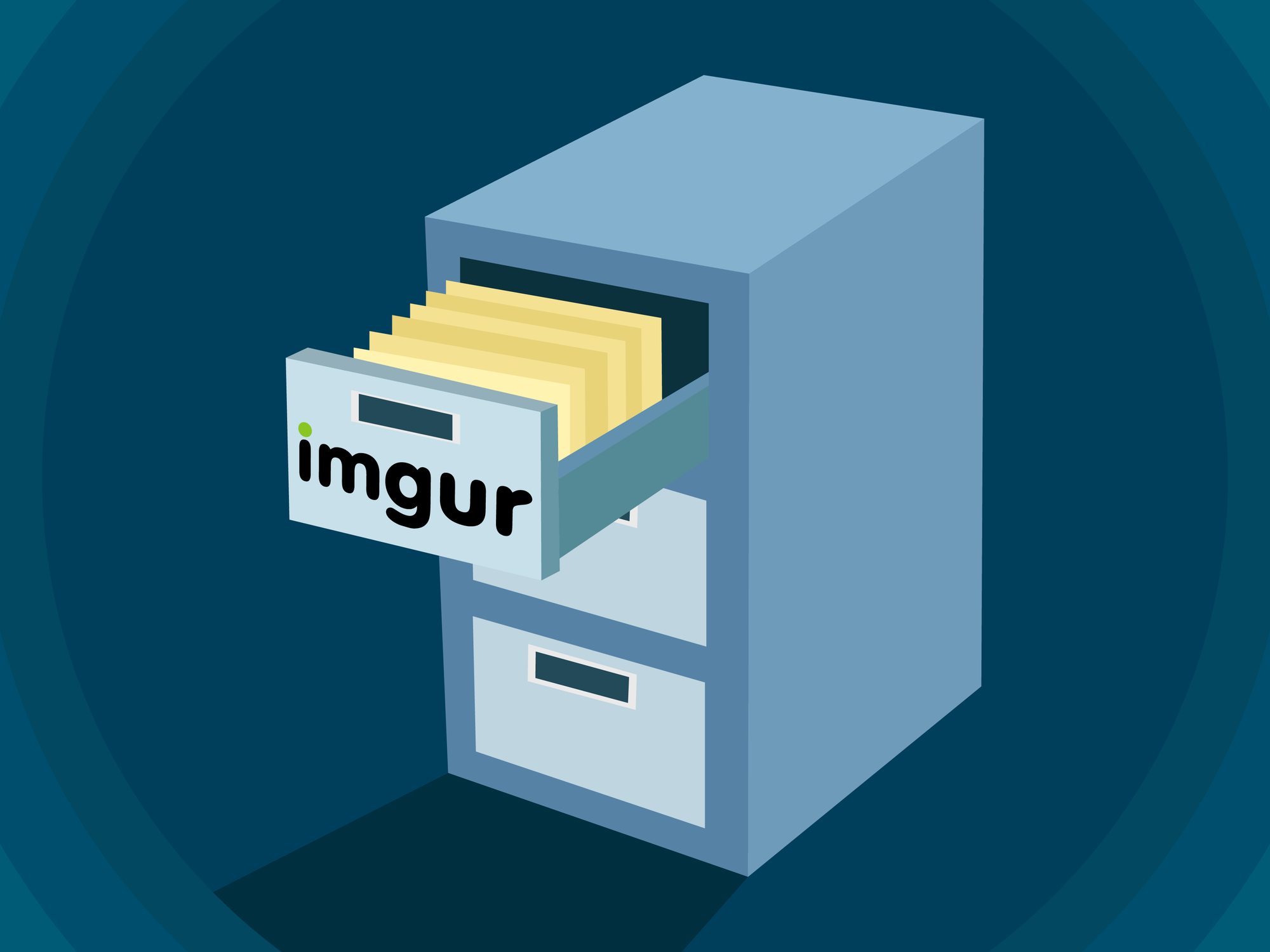There’s No Real Plan for Preserving Internet Content. Here’s Why That’s a Problem

Back in April, image hosting site Imgur – a popular option for users of Reddit and similar forums seeking to post memes or photos – announced a sweeping change to its Terms of Service. As of May 15, the site will no longer host “nudity, pornography, & sexually explicit content,” and it also plans to purge “old, unused, and inactive content” that’s not tied to an active user account. Though some of the terminology in Imgur’s blog post – like “old” and “inactive” – leaves them lots of wiggle room to decide what gets to stay on the site, and they have even allowed a general exception for “artistic nudity,” the overall message is clear: the site plans to rid itself of NSFW content.
No one would deny that Imgur is perfectly within its right to host or not host whatever content it pleases. But the fact remains that, as of May 15, a large chunk of content that has been available on the platform for the entire internet to view and enjoy will simply disappear. In this particular case, most people will likely not notice that anything has happened to old pornographic images from Imgur, many of them uploaded years ago by people who have long since moved on.
Still, the situation points to a much larger issue that has loomed over the internet for its entire life cycle, and seems to still have no immediate answer or solution. Will useful or worthwhile content that’s on the internet always remain available? And if so, whose job is it to preserve and maintain this vast and unruly collection of information and data?
Over time, internet users come to rely on resources like Imgur, to think of them as something of a digital filing cabinet that you can always return to, open up, and find exactly what you need. But websites are not furniture; they’re the public faces of living, active businesses and organizations, and like everything else, they are ephemeral.
Twitter, for example, launched in 2006 and now sits on a massive compendium of real-time data and information about basically every aspect of human life for the last 15 years or so. Despite its utility as a resource and research tool, we now get daily reminders that all of this information is privately owned by a relatively unpredictable man who could do with it whatever he pleases. The Library of Congress used to archive all tweets but gave up in 2017. Now they only hang on to tweets of significant national importance. WhyNow notes that, on just about any big Wikipedia page, jumping down to the footnotes and references leads to a bevy of broken links, either totally dead or pointing to something different than they did when the article was first written.
In the case of Imgur, the Something Awful community has actually jumped in to respond. Forums like Something Awful, which goes back over 2 decades at this point, have been down this road many times before, with services like Flickr, ImageShack, and others once filling the role now occupied by Imgur before they also changed their terms of service or went out of business. So once members of that storied and controversial internet forum heard the announcement about the Imgur purge, they snapped into action and organized a massive project – dubbed the Great Imgur Download Caper – to preserve the image hosting site’s complete library.
This is something of a special case, though. Imgur’s library contains almost entirely still images or brief video clips, which are easy for a big group of interested users to divvy up, download, and personally store. As well, Something Awful is a devoted community, made up of a self-selected group with a particular interest in shocking, sexy, or memeable images. It’s only natural they’d want to preserve the Imgur collection for all times, even if other people are more than happy to see that particular archive go away. (The Verge notes that some on social media have cracked jokes about finally being free of their adolescent Imgur accounts.)
For internet sites and communities with a less passionate following, or with content that’s more time-consuming or cumbersome to download and preserve, casual internet community organization may not be enough to save them from permanent deletion.
Most streaming video platforms don’t provide users with any ability to fully download shows, let alone storing them permanently on a third-party device. While previous generations had physical media releases to fall back on, a lot of films and shows simply don’t get DVD or Blu-Ray releases any more, particularly if they’re widely available on streaming services. So when a streaming platform goes away, often its entire programming library disappears as well. That’s what happened to NBCU’s subscription-based comedy platform, Seeso, the K-pop focused livestreaming app V Live, and the streaming platform launched by Fullscreen Media.
I actually made one of those streaming shows for Fullscreen that disappeared from the internet forever save for the first episode which lives on as a YouTube clip.
To that end, mobile-exclusive streaming service Quibi also folded very quickly, but they worked out a deal to push a lot of their most popular content over to Roku Channel. Some of those Quibi shows have actually lived on in their new home; “Die Hart” and “The Most Dangerous Game” got renewed for second seasons.
The situation got some extra scrutiny earlier this year, when a federal judge ruled in favor of book publishers over the nonprofit Internet Archive, in what could ultimately prove a landmark decision. Four publishing houses – Hachette Book Group, HarperCollins, John Wiley & Sons, and Penguin Random House – sued the Internet Archive for “mass copyright infringement.”
The Archive – whose stated goal is providing “universal access to all knowledge” – does not pay to license books from publishers, but practices what it calls “controlled digital lending.” (Under this system, the owner of a book scans their physical copy and then lends out the scanned versions.) They argued that this counted as fair use, but U.S. District Court Judge John G. Koeltl of the Southern District of New York disagreed. The Internet Archive plans to appeal the ruling; in a statement, founder Brewster Kahle argued that “libraries are more than the customer service departments for corporate database products.”
If the ruling stands, it could prove devastating to widespread efforts to preserve internet content. Preservationists rely on non-profits like the Internet Archive (which also runs the popular “Wayback Machine” website showcasing classic internet content) specifically because they aren’t privately-owned companies. A paid subscription platform can’t take over Imgur’s content and claim it for its own; there are copyright issues and legal liabilities to worry about. So for now, this is primarily the domain of libraries, museums, and other community-based organizations. But if they’re under threat of lawsuit for downloading and providing access to copywritten material, it could potentially stymie all their efforts.
- With Sky-High Stakes, What Can Studios Do to Fight Piracy? ›
- Watch: The Future of Content Moderation Online ›
- How Redditors Convinced ChatGPT To Break All Its Rules ›




